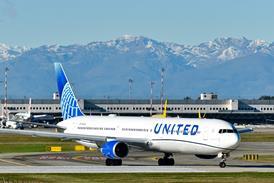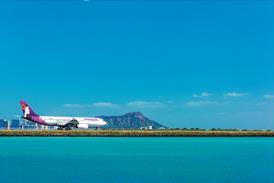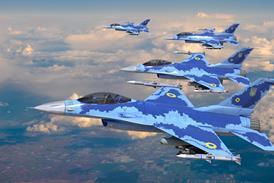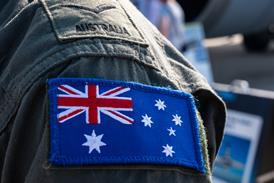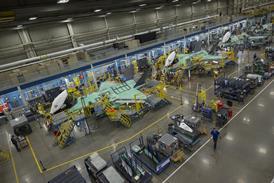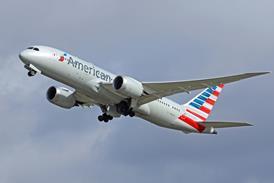Kevin O'Toole/LONDON
This is not the end. It is not even the beginning of the end, but it is, perhaps the end of beginning. So warned Winston Churchill after an early skirmish in 1942. The world aerospace industry could have cause to agree with the sentiment, as the great US restructuring now draws to a close.
True, the breakneck consolidation among the top tier of US aerospace/defence companies, carried out under the watchful eye of the Pentagon, appears to be largely complete. The endgame played out over the last year has left only two fully capable platform manufacturers in Boeing and Lockheed Martin.
The two groupings ended 1996 already well ahead of the field, as witnessed by this year's Aerospace Top 100 - a ranking of the world's largest aerospace groups compiled by Flight International and Booz Allen & Hamilton, a leading international management and technology consultancy.
McDonnell Douglas (MDC) and Northrop Grumman, having conceded their fights to beat the leaders, have had to join them, setting Boeing and Lockheed Martin on course for annual sales in the region of $40-50 billion each. By rough calculation that would put them two to three times ahead of their nearest competitors.
Raytheon has further tidied up the missiles and defence-electronics sector, sweeping up businesses from Hughes and Texas Instruments. Together with its civil-aircraft operations, that should place the group on a comfortable $17 billion or so of aerospace sales.
Yet these coups among the US majors raise as many questions for the industry as they answer. Not least is the issue of a response from Europe, which has still to turn good intentions into action. It is salutary to note that even Europe's three biggest players, Aerospatiale, British Aerospace and Daimler-Benz Aerospace (Dasa), cannot together muster the same sales as Boeing/MDC. Airbus Industrie (not yet a company) would have got to only eighth place in the 1996 rankings and, even with growth this year, is likely to emerge a quarter of the size of the enlarged Boeing.
Consolidation among the primes is also beginning to make consolidation further down the supply chain, on both sides of the Atlantic, look inevitable.
Ian Godden, lead aerospace consultant with Booz Allen in Europe, points out that, despite the scale of the US consolidation, it has still been largely a regional affair. He argues that the next stage will be to go global. "We're now entering a different-era type of international outlook on consolidation, and we're only at the very early stages of that," he says.
Admittedly, there may first be some unfinished business in the US market. The helicopter sector, for example, is still split between four fairly evenly matched manufacturers.
Boeing now has the option of raising the stakes by pulling its own helicopter business together with that of MDC, but (for the time being, at least) has chosen to leave that alone as it concentrates on the bigger task of absorbing the core defence operations. Sikorsky, with annual sales of $1.6 billion, and Bell on around $1 billion, are both watching with interest.
World-scale leaders have also yet to emerge among sectors such as fight controls. Even a cursory glance down the Top 100 shows the gulf which has opened up between the first-tier primes and their suppliers. In the US industry, only AlliedSignal and possibly TRW make it into the top ten. Booz Allen suggests that moves among the second-tier companies, less in the spotlight of international politics, could help pioneer globalisation of the industry. A few tentative transatlantic acquisitions have already been made. A handful of UK companies has made US acquisitions over the last couple of years, as detailed in the Top 100, and rumours are rife on Wall Street about the potential European ambitions of AlliedSignal and BFGoodrich. Booz Allen believes, however, that there will be much more to come.
TIME RUNS OUT for Europe
How fast and far the transatlantic consolidation develops is largely dependent on what happens within Europe over the next few months. The prospect of some major progress seemed tantalisingly close at the start of 1997. The Airbus partners had agreed to turn the consortium into a stand-alone Single Corporate Entity, at last giving Europe a corporate focus for its target of integration. As a part of the package, France also promised the long-awaited privatisation of Thomson-CSF as well as the Aerospatiale-Dassault merger.
The moves offered to unlock the door to a string of potential mergers and acquisitions across Europe. Six months later, however, the new French Government has gone back to the drawing board. Godden warns that, unless a solution emerges soon, the fragile consensus over the search for European integration could begin to disintegrate, with the UK and possibly Italian companies again looking back across the Atlantic for potential alliances.
So far, companies such as BAe have agreed that European consolidation should take precedence, not least to create a scale of company which could hold its own in talks with the emerging US giants.
The theory, however, has been easier than the practice. Besides the obvious political barriers to cross-border mergers, there are also some fundamental differences over valuation.
As the results in the Top 100 demonstrate, there remains a gaping gulf between the healthy returns now being made by groups which have already put their houses in order, and those which are only now emerging into profit. Godden adds that attitudes towards valuation between state-owned and publicly quoted companies may simply prove irreconcilable.
Valuation issues stopped BAe and Matra sealing their missiles tie-up for around two years, despite the fact that both are privately owned. By contrast, deals in the USA have taken, in some cases, only weeks.
Lockheed Martin chairman Norm Augustine points out that Martin Marietta's take-over of GE Aerospace, one of the first moves in the creation of the current giant, was signed, sealed and delivered in only 27 days. He argues that such speed is vital.
Augustine also argues that privatisation will be essential to make mergers work. "You cannot have mergers between private and state-owned companies. Those that are already privatised are going to get tired of waiting," he says.
Godden agrees. "Suppliers in the UK in particular are losing their patience. They may decide that it's going to take too long and be too late and too difficult," he says, going on to warn that companies will start breaking ranks and search for transatlantic tie-ups within a matter of months if there is no sign of progress in Europe.
BAe has already laid the foundations of an alliance with Lockheed Martin through their tie-up on a Joint Strike Fighter bid, and GEC has hinted publicly that it may yet turn its attentions to the USA.
THE down-CYCLE awaits
The pressures to move quickly on acquisitions may be further fuelled by the prospect of escalating prices. When consolidation began in the US defence industry four to Ìve years ago, businesses were changing hands at less than the value of their annual sales. Deals so far this year have averaged a premium of around 40%.
Lockheed Martin, which blanched at the cost of acquisitions when they began to climb above $1 for $1 of sales, is buying Northrop Grumman for a premium of around $1.8.
It is a simple equation of supply and demand which ensures that prices rise as the number of potential partners dwindles. A booming market is also playing its part. Throughout the Top 100 ranking there is an increase in sales and profits, led by the growth in civil-airliner markets. Levels of capital expenditure, research spending and employment levels, too are showing overall rises, as manufacturers crank up output.
Godden warns, however, that they should tread cautiously. Best economic estimates, and decades of experience, suggest that the present boom may last for another three or four years. "At this point in the cycle, people should be starting to plan for the peak and for coping with the next downturn," says Godden. If the industry gets carried away and over-invests during the build-up, there is a real danger that it will live to regret it during the next downturn.
That is also true of acquisitions. Those who invested during the last peak in the late 1980s had time to rue the prices paid in the cold light of the early-1990s bust.
One longer-term trend which should perhaps be concentrating minds in aerospace industries on both sides of the Atlantic is the slow but steady rise of Asia-Pacific competitors. Mitsubishi Heavy Industries is already among the top 20 players, with Kawasaki and Samsung coming up behind. They have yet to make the move from suppliers to primes, but then aerospace is a long-term game.
"So far they have been suppliers, part of someone else's plan. Their next step is to take leadership, to gain control over their own destiny," says Godden. He admits that just how long that takes is debatable (perhaps 15-20 years on the pessimistic side) but there is little doubt that their impact on an increasingly global aerospace market is only in its infancy.
Source: Flight International

